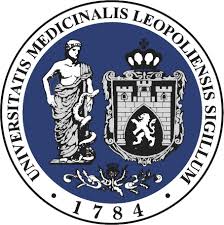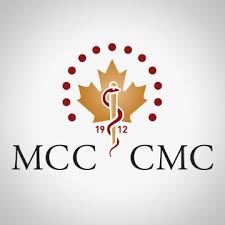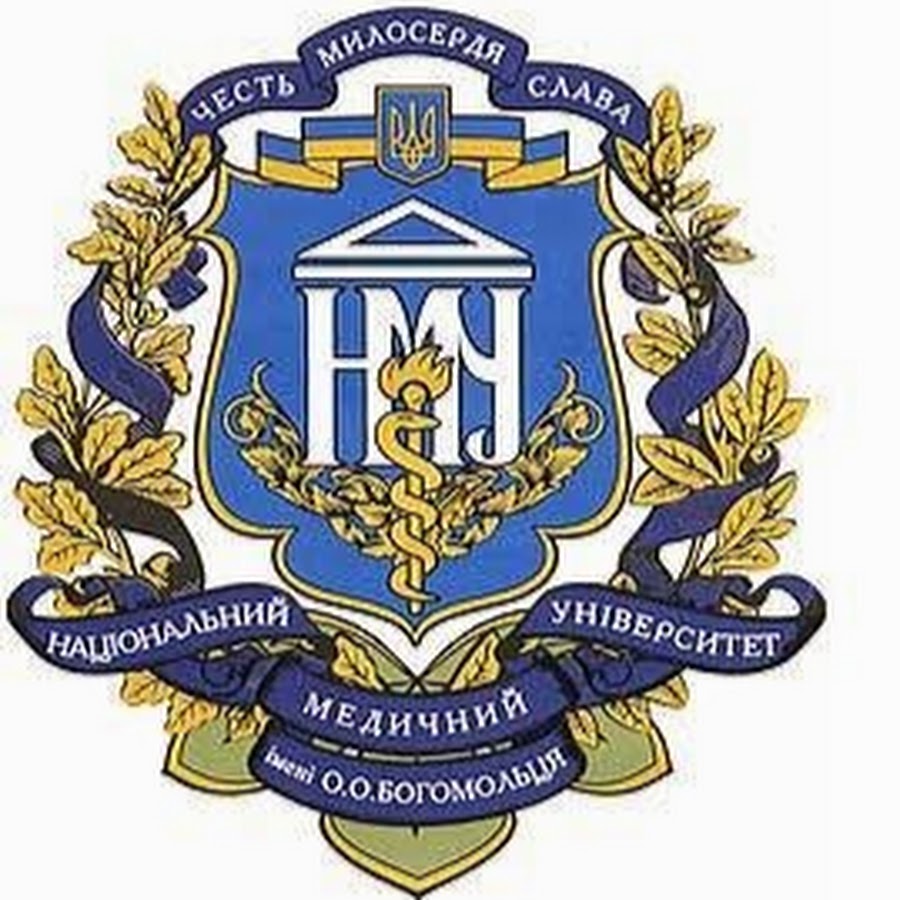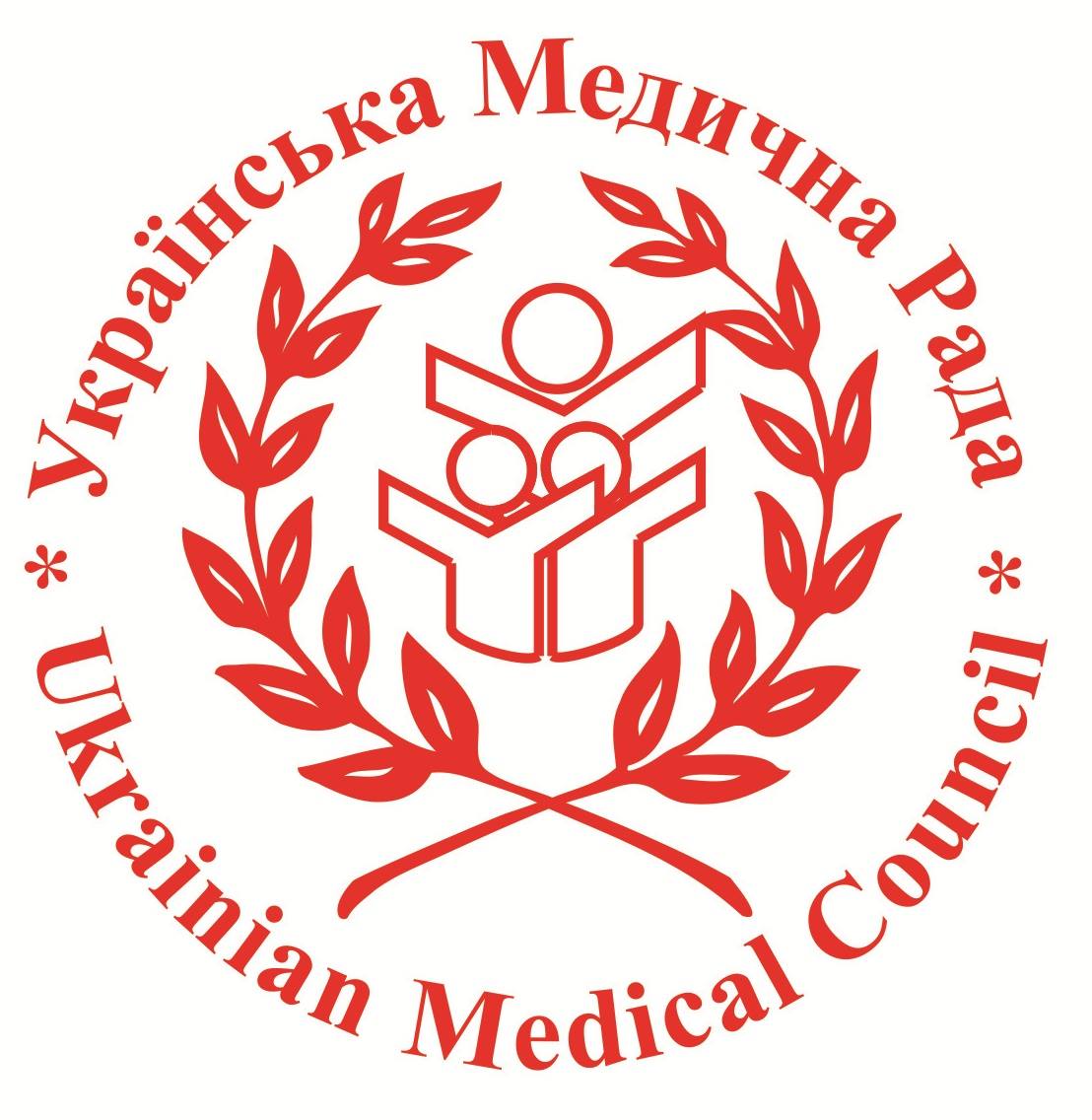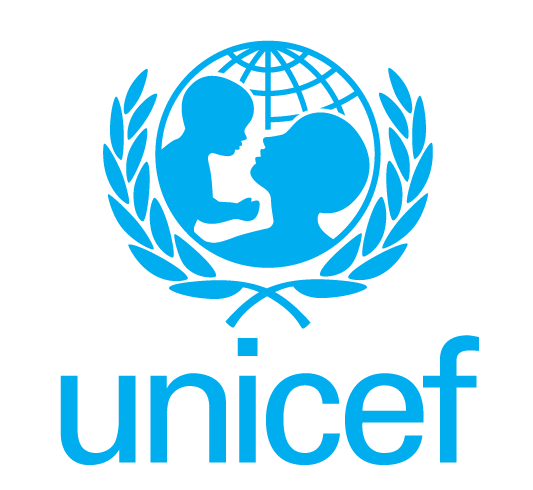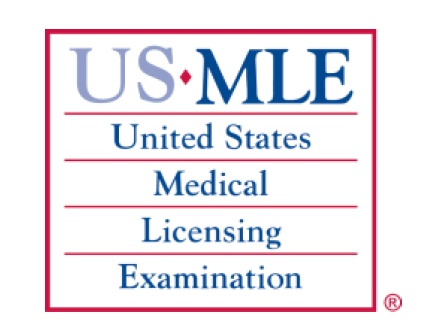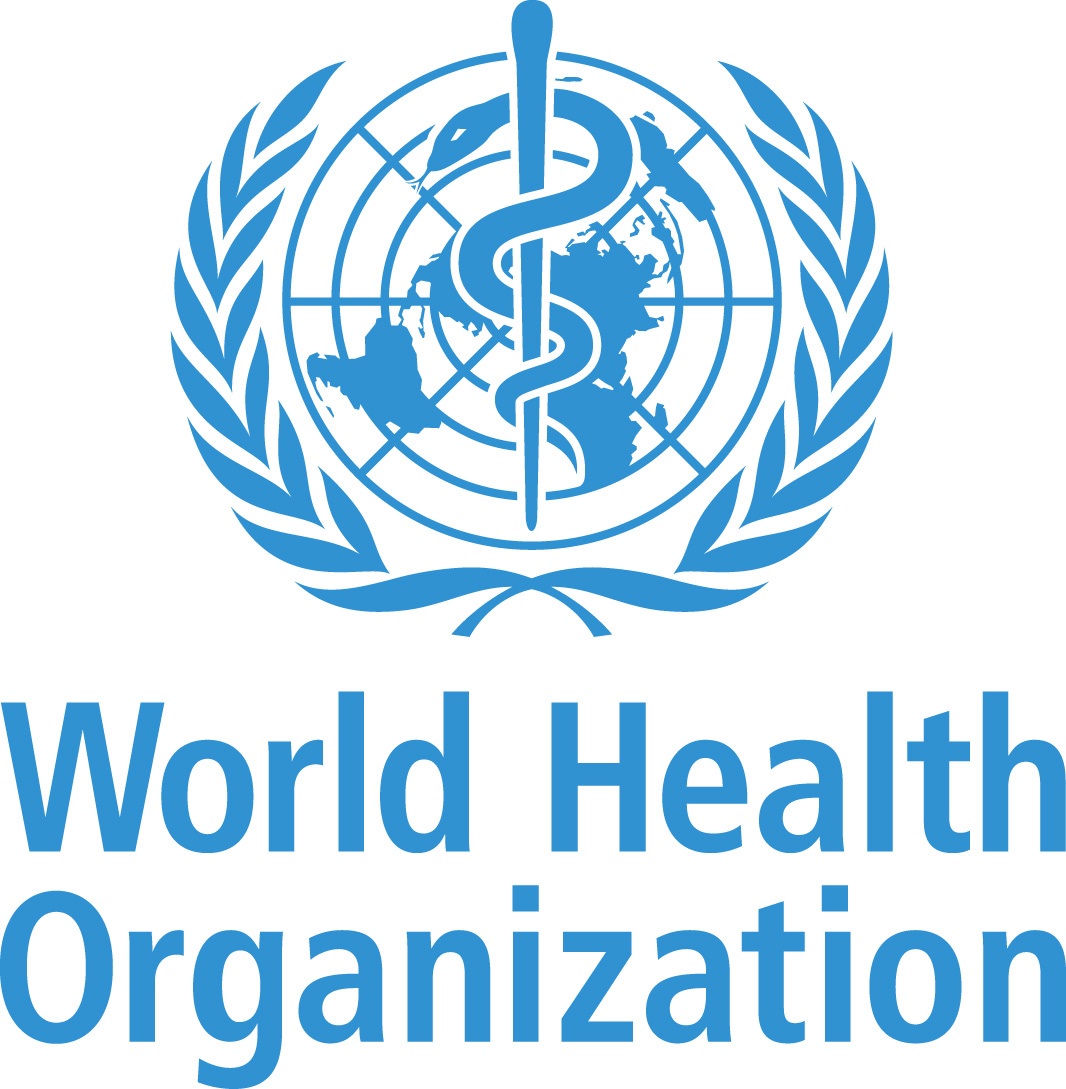NANJING MEDICAL UNIVERSITY CHINA
LOCATION AND INTERNATIONAL AIRPORT IN THE CITY
LOCATION OF VOLGOGRAD STATE MEDICAL UNIVERSITY, STUDY MBBS IN RUSSIA
140 Hanzhong Rd, Gulou Qu,
Nanjing Shi, Jiangsu Sheng,
China, 210029
MAP LOCATION
We MBBSUNIVERSITIES.COM guarantee you admission in the best medical colleges of CHINA with the best fee package.
We the team of doctors in MBBSUNIVERSITIES.COM had enough research through the medical colleges in CHINA and we will guide you to select the colleges for MBBS in CHINA.
We guarantee you the cheapest package and minimum consultancy charges for MBBS in NANJING MEDICAL University is Recognised by WHO and Medical council of India, we are the No. 1 MBBS admission In Abroad Education guideline providers in India because we are doctors not agents. Just call our doctors because doctors can guide students better than agents - 1800-123-5619
They will give you information to select the Best Universities & be Your Complete Guide
They will provide you Step-by-step Guide for MBBS in Abroad and will help you to get DIRECT ADMISSION IN MBBS
TOP MEDICAL COLLEGE IN CHINA, NANJING MEDICAL UNIVERSITY. DIRECT MBBS ADMISSION IN NANJING MEDICAL UNIVERSITY CHINA.
About the country
China, officially the People's Republic of China (PRC), is a country in East Asia and the world's most populous country in the world, with a population of around 1.404 billion. Covering approximately 9,600,000 square kilometers (3,700,000 sq mi), it is the third- or fourth-largest country by total area. This country Governed by the Communist Party of China, the state exercises jurisdiction over 22 provinces, five autonomous regions, four direct-controlled municipalities (Beijing, Tianjin, Shanghai, and Chongqing), and the special administrative regions of Hong Kong and Macau.
China emerged as one of the world's earliest civilizations, in the fertile basin of the Yellow River in the North China Plain. For millennia, China's political system was based on hereditary monarchies, or dynasties, beginning with the semi-legendary Xia dynasty in 21st century BCE. Since then, China has expanded, fractured, and re-unified numerous times. In the 3rd century BCE, the Qin reunited core China and established the first Chinese empire. The succeeding Han dynasty, which ruled from 206 BC until 220 AD, saw some of the most advanced technology at that time, including papermaking and the compass, along with agricultural and medical improvements. The invention of gunpowder and movable type in the Tang dynasty (618–907) and Northern Song (960–1127) completed the Four Great Inventions. Tang culture spread widely in Asia, as the new Silk Route brought traders to as far as Mesopotamia and Horn of Africa. Dynastic rule ended in 1912 with the Xinhai Revolution, when a republic replaced the Qing dynasty.
Since the introduction of economic reforms in 1978, China's economy has been one of the world's fastest-growing with annual growth rates consistently above 6 percent. As of 2016, it is the world's second-largest economy by nominal GDP and largest by purchasing power parity (PPP). China is also the world's largest exporter and second-largest importer of goods. China is a recognized nuclear weapons state and has the world's largest standing army and second-largest defense budget. The PRC is a permanent member of the United Nations Security Council as it replaced the ROC in 1971, as well as an active global partner of ASEAN Plus mechanism. China is also a leading member of numerous formal and informal multilateral organizations, including the Shanghai Cooperation Organization (SCO), WTO, APEC, BRICS, the BCIM, and the G20. In recent times, China has been widely characterized as a global superpower.
FOREIGN RELATIONS OF CHINA.
The PRC has diplomatic relations with 175 countries and maintains embassies in 162 countries. In 1971, the PRC replaced the Republic of China as the sole representative of China in the United Nations and as one of the five permanent members of the United Nations Security Council. China was also a former member and leader of the Non-Aligned Movement, and still considers itself an advocate for developing countries.] Along with Brazil, Russia, India and South Africa, China is a member of the BRICS group of emerging major economies and hosted the group's third official summit at Sanya, Hainan in April 2011.
EMERGING SUPERPOWER STATUS.
China is regularly hailed as a potential new superpower, with certain commentators citing its rapid economic progress, growing military might, very large population, and increasing international influence as signs that it will play a prominent global role in the 21st century. Others, however, warn that economic bubbles and demographic imbalances could slow or even halt China's growth as the century progresses.
ECONOMY
China had the largest economy in the world for most of the past two thousand years, during which it has seen cycles of prosperity and decline. Since economic reforms began in 1978, China has developed into a highly diversified economy and one of the most consequential players in international trade. Major sectors of competitive strength include manufacturing, mining, steel, textiles, automobiles, energy generation, banking, electronics, telecommunications, real estate, e-commerce, and tourism. As of 2017, China has the world's second-largest economy in terms of nominal GDP, totalling approximately US$12.014 trillion according to the International Monetary Fund. In terms of purchasing power parity (PPP) GDP, China's economy has been the largest in the world since 2016. It ranks behind over 70 countries (out of around 180) in per capita economic output, making it a middle income country. Additionally, its development is highly uneven. Its major cities and coastal areas are far more prosperous compared to rural and interior regions
China is a member of the WTO and is the world's largest trading power, with a total international trade value of US$3.87 trillion in 2012.] Its foreign exchange reserves reached US$2.85 trillion by the end of 2010, an increase of 18.7% over the previous year, making its reserves by far the world's largest. In 2012, China was the world's largest recipient of inward foreign direct investment (FDI), attracting $253 billion. In 2014, China's foreign exchange remittances were $US64 billion making it the second largest recipient of remittances in the world. China also invests abroad, with a total outward FDI of $62.4 billion in 2012, and a number of major takeovers of foreign firms by Chinese companies.] China is a major owner of US public debt, holding trillions of dollars worth of U.S. Treasury .
LANGUAGES
There are as many as 292 living languages in China. The languages most commonly spoken belong to the Sinitic branch of the Sino-Tibetan language family, which contains Mandarin (spoken by 70% of the population),] and other varieties of Chinese language: Yue (including Cantonese and Taishanese), Wu (including Shanghainese and Suzhounese), Min (including Fuzhounese, Hokkien and Teochew), Xiang, Gan and Hakka. Languages of the Tibeto-Burman branch, including Tibetan, Qiang, Naxi and Yi, are spoken across the Tibetan and Yunnan–Guizhou Plateau. Other ethnic minority languages in southwest China include Zhuang, Thai, Dong and Sui of the Tai-Kadai family, Miao and Yao of the Hmong–Mien family, and Wa of the Austroasiatic family. Across northeastern and northwestern China, local ethnic groups speak Altaic languages including Manchu, Mongolian and several Turkic languages: Uyghur, Kazakh, Kyrgyz, Salar and Western Yugur. Korean is spoken natively along the border with North Korea. Sarikoli, the language of Tajiks in western Xinjiang, is an Indo-European language. Taiwanese aborigines, including a small population on the mainland, speak Austronesian languages.
Standard Mandarin, a variety of Mandarin based on the Beijing dialect, is the official national language of China and is used as a lingua franca in the country between people of different linguistic backgrounds.
EDUCATION.
CHINA MEDICAL UNIVERSITY is one of the top-ranked universities in China. Since 1986, compulsory education in China comprises primary and junior secondary school, which together last for nine years. In 2010, about 82.5 percent of students continued their education at a three-year senior secondary school. The Gaokao, China's national university entrance exam, is a prerequisite for entrance into most higher education institutions. In 2010, 27 percent of secondary school graduates are enrolled in higher education. This number increased significantly over the last years, reaching a tertiary school enrollment of 48.4 percent in 2016. Vocational education is available to students at the secondary and tertiary level.
RELIGION.
The government of the People's Republic of China officially espouses state atheism, and has conducted antireligious campaigns to this end. Religious affairs and issues in the country are overseen by the State Administration for Religious Affairs. Freedom of religion is guaranteed by China's constitution.
Chinese folk belief, 16% are Buddhists, 2% are Christians, 1% are Muslims, and 8% adhere to other religions including Taoists and folk salvationism. In addition to Han people's local religious practices, there are also various ethnic minority groups in China who maintain their traditional autochthone religions.
FAMOUS PLACES IN CHINA:
-
The Great Wall of China in Beijing — World’s Longest Wall
-
The Terracotta Army in Xi'an — 2,000-Year-Old Underground Army
-
The Forbidden City in Beijing — Imperial Palace for 24 Emperors. It was once a "palace city"
-
The Bund in Shanghai — Stunning Skyline, Colonial Architecture.
ABOUT THE CLIMATE
China's climate is divided into six categories as follows: tropical, subtropical, warm-temperate, temperate, cold-temperate, and Qinghai-Tibet Plateau temperate zone. Most of the country lies in the northern temperate zone, which is characterized by warm climate and well-defined seasons, being suitable for habitation.
Actually, the climate in China varies greatly from south to north, especially in winter when dry and cold winds, blowing from Siberia and the Mongolian Plateau, lead to a huge temperature gap between south (above 0℃) and north (far below 0℃) China.
In summers, however, except for a few remote places, there is little temperature difference between north and south China for there are overall high temperatures in almost the whole country. enerally, compared to the sweltering summers and chilly winters, the cool autumns (September and October)and warm springs (end of April to beginning of June) are the best seasons to travel to China.
ABOUT THE CITY
ABOUT THE CITY( NANJING)
Name : NANJING
Meaning : 'southern capital'
Previous names : Nanking, Yecheng, Yuecheng, Moling, Jiankang, Jiangning, Tianjing
FEATURES
-
One of the four great capital cities of ancient empires
-
Ancient architecture, parks, and amusement parks
-
East coast transportation hub
MAIN ATTRACTION
-
Sun Yat-sen Mausoleum, China Gate, Ming Xiaoling Mausoleum, and Lingqu Temple, President Palace, Confucius Temple
-
Most popular souvenirs and local products: velvet, satin, imitation ivory, Yuhua Pebbles, Chinese painting and calligraphy
-
Most popular local food: xiaolongbao, tangbao (soup dumpling), yashui duck, eight delicacies soup
HISTORY
The city is a region that is surrounded by mountains that made access difficult until recent decades. This preserved some of the traditional culture of the area. Nearby Huangshan Mountain has long been an attraction for travellers for hundreds of years.
-
333 Chu built Jingling Yi.
-
229 Sun Quan established his capital here during the Three Kingdoms era following the Han Empire era.
-
1368 The Ming Empire established their new capital.
-
1853 The Taiping army captured Nanjing, and it was their capital city during their rule.
-
1927 The Nationalist government made it their capital city.
-
1937 The Japanese army captured the city, and a large percentage of the population died
CLIMATE
-
Annual average climate low temperature in January: -1 °C (30.2 °F)
-
Annual average high temperature in July and August: 32 °C (89.6 °F)
-
Humid subtropical climate with four distinct seasons; annual precipitation: 1,062 mm (42 in)
Summers are hot and humid, and the winters are cold and damp.
TRANSPORTATION
-
Nanjing Lukou International Airport is one of the top 15 busiest in the country.
-
3 train stations
-
2 bullet train lines to Shanghai.
-
2 line subway
-
60 highways meet there.
-
Nanjing is a transportation hub for eastern China south of the Yangtze River
AIRPORTS
The Nanjing Lukou International Airport is located in the suburban area of Jiangning District. It is over 35 kilometers to the south from the downtown area of Nanjing.26.9 miles distance from Nanjing medical university to Nanjing international airports • Light traffic • 30 min Nanjing Medical University-No.2 Teaching Building Nanjing Lukou International Airport.
STUDY MBBS IN CHINA
NANJING MEDICAL UNIVERSITY.DIRECT MBBS ADMISSION IN NANJING MEDICAL UNIVERSITY CHINA
ABOUT THE COLLEGE
Nanjing Medical University was founded in 1934 as Jiangsu Provincial College of Health Policy and Management. In the year of 1957, it moved from Zhenjiang to Nanjing and changed its name to Nanjing Medical College. In 1962, it became one of the first groups of medical colleges in China to offer six-year medical programs, and in 1981, it was approved to award master and doctoral degrees.In 1993, it was renamed as Nanjing Medical University and is one of the key universities sponsored by Jiangsu Province. In September 2015, NMU has been approved to be one of the first groups of medical universities which are co-sponsored by the Ministry of Education, National Health and Family Planning Commission of the People’s Republic of China and Jiangsu Provincial People’s government.The university consists of twenty-two schools and one independent school (Kangda School). It has twenty-four affiliated hospitals and more than fifty teaching hospitals in Jiangsu, Shanghai, Zhejiang, and Shandong Provinces. Presently the university has more than 1600 employees, including 825 skilled teaching staff, 188 professors, 252 associate professors, 422 doctoral supervisors and 1746 master tutors (includingpeople from the affiliated hospitals). Among them, there is one academician of the Chinese Academy of Engineering, one foreign academician of Institute of Medicine at the American National Academy of Sciences, three “Cheung Kong Scholar” Distinguished Visiting Professors, one young scholar of the “Cheung Kong Scholar Incentive Plan”, one leading talent of the “Ten Thousand Talents Plan”, seven recruited global experts from the National “Thousand Talent” Program, seven winners of the China National Funds for Distinguished Young Scientists, eight winners of the Outstanding Youth Fund, one winner of the National Award for Distinguished Teachers, seven winners of the funds from New Century Excellent Talent Support Program of the Ministry of Education, three “State-Level Teaching Teams”, and one “Innovation Team” from the Ministry of Education. The university is the training base for the High Level Talent Training Plan of Jiangsu Province, which is also known as the “333 Project”. And NMU has been awarded many times by the superiors for the cause of talent-cultivation
The university now has eight first-level discipline doctoral programs (basic medicine, clinical medicine, dental medicine, public health and preventive medicine, pharmacy, special medicine, nursing, humanistic medicine), fifty second-level discipline doctoral programs, eleven first-level discipline master’s programs, seventy-three second-level discipline master's programs and seven postdoctoral research stations. Options for discipline programs have crossed the boundaries between medicine, science, engineering, management, law, education and literature. It also has three state-level key disciplines, one key discipline for state-level cultivation, 28 national clinical key specialties, two programs of state key discipline (first-level disciplines of Jiangsu) of cultivation and construction, and three key Jiangsu first-level disciplines. Five disciplines – Clinical Medicine, Molecular Biology and Genetics, Biology & Biochemistry, Neuroscience & Behaviorand Pharmacology & Toxicology have ranked among the top 1% disciplines around the world according to ESI. Four disciplines of the university – namely basic medicine, public health and preventive medicine, clinical medicine, and dental medicine – are Strong Disciplines among Jiangsu colleges and universities.
The university has twenty undergraduate programs and three “5+3” integrated programs (undergraduate + postgraduate). Currently it has more than 13,000 students. The university has formed a comprehensive and multi-level educational system that covers undergraduate and graduate programs, as well as post-doctoral training, for full-time students, adults, and international students.
Nanjing Medical University now has one state-level key laboratory, four ministry-level key laboratories, and sixteen provincial-level key laboratories (engineering centers). Since the beginning of the “Twelfth Five-year Plan”, the scientific research level of NMU has continually ascended and the university has undertaken many “863” programs as well as the “973” programs. NMU has also made new breakthrough in the field of receiving National Natural Science Foundation. What’s more, the number of articles indexed in Science Citation Index (SCI) and the impact factors have increased by leaps and bounds. In 2016, 265 projects of NMU were approved by the National Science Foundation, which has ranked the 1st place among the independent medical universities and colleges in China. And NMU has been awarded as the “Advanced University for Science and Technology of Jiangsu Province” in succession.
NMU has developed five state-level excellent courses and four state-level excellent resource sharing courses. There are also five state-level featured programs, five provincial-level featured programs, four provincial-level brand programs and two state-level bilingual education model courses. The university has set up two state-level exemplary experiment teaching centers, nine provincial-level exemplary experiment teaching centers, and nineteen laboratories jointly funded by central and local governments. It also has a state-level experiment zone for innovation of talent cultivation modes. In addition, it has edited six textbooks under the guidance of the nation’s “Twelfth Five-Year Plan”. The enrollment and employment causes of the university have warmly received good judgment and the employment rate is always above 95%. The university has been awarded “Graduate Employment Advanced Collectives of Jiangsu Province” many times.
The university has two campuses, Wutai and Jiangning. Jiangning Campus, located in the university town in Jiangning, Nanjing, has a land area of eighty-seven hectares and is a center of administration, teaching and research.Wutai Campus, located at the south foot of Wutai Hill in Gulou District, Nanjing, has a land area of eight hectares and is a center of clinical teaching and research. With more than 1,080, 000 printed medical resources, more than 1,500,000 e-resources and over 6,000 journals in a variety of languages, the university library boasts a vast collection of resources that makes it a center of medical literature in Jiangsu province. NMU is also responsible for publishing 11 academic journals.
In recent years, the university has extensively carried out exchange activities and has actively developed multi-model relationships and cooperation with other colleges and universities. It has established cooperation and academic exchange with medical colleges and universities in the U.S., Canada, Australia, Sweden, Japan, Taiwan Province, Hong Kong SAR, etc. In 2002 the university resumed the admission of international students and students from Hong Kong, Macao, and Taiwan; and it now has more than 500 such students.
All the faculty members and staff of the university will spare no effort to unite as a whole, making overall plans, launching innovation and reform and try the best to achieve the goal of making NMU grow into a world renowned high-level research medical university with distinctive features.
CAMPUS & DEPARTMENTS OF NANJING MEDICAL UNIVERSITY
The education of preclinical medicine in Nanjing Medical University was started in 1934 and the preclinical medicine department was built in 1958. In 1994,the department was renamed into Basic Medical College.The college consists of 16 departments, 2 teaching and research sections, and 1 national model center of laboratory teaching (Basic Medical Sciences). In addition to 2 national key discipline nurturing bases and 5 provincial key disciplines, there are 1 discipline and 10 majors with the authorization to grant doctor’s degree, 15 disciplines and majors to grant master’s degrees, and 1 postdoctoral station in the school. It also has 1 ministerial key laboratory, 1 key laboratory cosponsored by the Ministry of Health, and 9 provincial key laboratories and engineering research centers.
At present, there are 361 faculty and staff members, of whom 239 are teachers, including 58 professors, 46 associate professors, 47 PhD supervisors and 32 master’s supervisors. Among the faculty members, 182 hold a doctor’s degree (76.2%) and 220 hold a master’s degree (92.1%).
The School is responsible for the basic courses and fundamental courses for different majors of Nanjing Medical University, covering different programs, different majors and different levels. It offers over 100 courses, which amount to more than 50,000 class hours per year.
To achieve the goal of creating a new teaching mode of basic medical sciences and producing quality medical talents, the School attaches great importance to teaching and teaching reform. During the recent 5 years, 46 teaching reform programs have been undertaken, over 90 teaching papers published. There are 2 national teaching teams, and 3 national excellent subjects in our college. Besides, it boasts 1 national excellent course, 6 provincial excellent courses and 4 provincial excellent textbook. The School has 3 new programs for the following majors and specialties: Medicine and Judicial Identification, Biotechnology and Biomedical Engineering.
In addition to teaching, the School encourages vigorous and rigorous scientific research. In recent 5 years, Basic Medical College has undertaken 266 research projects, including the national 10th Five-Year Plan projects, the “973 Program” projects, the “863 Program” projects and National Natural Science Foundation projects, and received research grant totaling over RMB ï¿¥198,030,000. The faculty has published more than 1050 papers at home and abroad, among which 434 are SCI papers. Moreover, the School has won 7 Science and Technology Progress Awards of ministerial and provincial levels. One of its doctoral dissertations has won the National Excellent Doctoral Dissertation Award. So far the School has also obtained 31 national patents.
The School also attaches great importance to international exchange and cooperation, and has established long-term cooperation relationship with colleges, universities and institutes in such countries and sections as U.S.A., Britain, Germany, France, Austria, Canada, Japan, Singapore and H.K. These efforts have not only built up the School’s international reputation but also helped to create a favorable environment internationally for its further development.The School of Basic Medical Sciences was ranked No. 7 in the overall ranking in the nationwide discipline evaluation (basic medical sciences) of academic degree and graduate education carried out in 2012.
CAMPUS & DEPARTMENTS OF NANJING MEDICAL UNIVERSITY
Nanjing Medical University Library was established in 1934. It is the medical literature center of Jiangsu Academic Library & Information System, member library of China Academic Library & Information System, Jiangsu Engineering Technology Literature Information Center and Jiangsu Medical and Health Center and Grand 1 Station of Chinese Academic Periodical Literature and Information Retrieval. The library has approximately the gross area of 25,000 m2 and more than 2000 reading seats distributed in Wutai and Jiangning campus. Under the service mode: integration of retrievalã€readã€borrow and preservation, the library is opened for 93 hours per week and 24 hours per day 7 days per week of online resources. Besides borrowing, the library also provides following services: document delivery, novelty search, citation search, special topic retrieval and retrieval course & training.
Nanjing Medical University Library’s collection is emphasized on preclinical medical, clinical medicine, stomatology, preventive medicine, biology, and pharmacy, taking maths, physics, chemistry, computer, management, social science and literature as supplement. It currently has 910,000 printed resources, 52 databases, 720,000 e-books and 38,000 full text e-journals.
With the service philosophy “reader-oriented” and direction for digital library construction, the library is playing a unique role in scientific research, culture communication and social service of Nanjing Medical University.
HIGHLIGHTS OF THE MEDICAL COLLEGE.
-
NMU is a partner of World Health Organization.
-
NMU to promote international education and enhance the quality of education, has an international exchange and cooperation program. It works with scientific research institutions, medical universities and medical schools in the Britain, United States of America, Australia, Germany, Japan and France.
-
Nanjing Medical University is ranked in the list of top universities in the world, by Academic Ranking of World Universities.
-
20 hospitals affiliated with this university, which provides great exposure in terms of practical training.
-
University provides Indian food for Indian students through a dedicated Indian restaurant set in the campus.
-
Cost of MBBS program in China in this university is very reasonable without a compromise in the quality of education.
-
Campus hostel is equipped with all amenities and it is relatively a wiser option to stay in the campus hostel.
FEE STRUCTURE OF VOLGOGRAD STATE MEDICAL UNIVERSITY. Study MBBS in VOLGOGRAD STATE MEDICAL UNIVERSITY
We Will Upload Complete 2019 Fee Structure!
Kindly Contact Us For Any Query via Call :- 1800-123-5619 Or Email :-
[email protected].
We Are At Your Service.
ACCOMODATION AND LIFE IN NANJING MEDICAL UNIVERSITY.
Well furnished accommodation.
ADMISSION PROCEDURE
While admission to NMU is relatively simple, eligibility to admission is tough.
-
Basic eligibility qualification to apply for MBBS or BDS in this college is a pass in class 12 examination, in 10 + 2 education system or any equivalent higher secondary examination from approved board of education.
-
Major subject of study in higher secondary shall be Physics, Chemistry, Biology and English.
-
Minimum qualifying mark to apply for entrance examination varies with the board of study.
Study in State Board – 85% minimum qualifying marks
Study in Central Board CBSE / ICSE – 70 % minimum qualifying marks
IB / IGCSE Boards – A grade
Last date for applying for the medical program in NMU is 30th June every year. The admission is provided on first come first serve basis where the international quota is likely to get filled by the second week of June itself.
The documents required would be:
-
10th , 11th and 12th level transcripts
-
10th Passing certificate
-
Digital photograph
-
Passport copy (At reservation stage, an Aadhar card is acceptable)
-
University application fees (on-line or Off line).
-
Letter of recommendation from high school / Junior college HOD / teacher
-
Our registration form duly filled and signed
Eligibility
-
Foreign citizens, who are not of Chinese nationality according to the nationality law of the People's Republic of China, with good moral character and in good health, and have obtained a high school diploma or above.
-
Outstanding academic performance
-
Age 18 or above (by September 1, 2019). For applicants under 18, please bring along relevant supporting documents during the official registration.
-
Applicants who have given up the original Chinese citizenship and become foreign citizens must meet the conditions set out in the Document No.83 (2009) of the Ministry of Education of the PRC.
Application Procedures
Submit application documents → Assessment of documents by BUCM → Receive the acceptance letter, Foreign Students VISA Application Form and JW202 form → Apply for VISA at the Chinese embassy of the student’s country of origin → Arrive at school
Application Documents
Compulsory Documents
-
A photocopy of the passport’s information page
-
BUCM Application Form for International Students (please refer to the attachment)
-
Photocopies of the student’s latest qualification certificate (The original document and translated documents in Chinese or English)
-
Academic performance. Supporting documents including, but not limited to, the following should be provided:
-
Photocopies of High school/University (if applicable) transcript (The original document and translated documents in Chinese or English)
-
Certificate of National/Regional Graduation Examination/Matriculation Examination
-
Other supporting materials
Optional Documents
-
Personal Statement
-
Recommendation letter/s
-
Relevant certificates for talent and skills (Level certificates or Honor certificates)
-
Financial proof
NEET compulsion for MBBS in Abroad
Qualifying the National Eligibility cum Entrance Test (NEET) is mandatory for students seeking to pursue MBBS courses from foreign medical institutions, the Medical Council of India (MCI) has declared via a public notice on March 8, 2018.
The information, which had already been made public earlier by the Ministry of Health and Family Welfare (MoHFW) during the time of the release of the NEET notification in February 2018, has now been officially confirmed through the MCI notice. As per the MCI, the existing practice of issuing eligibility certificate to candidates desirous of pursuing MBBS abroad will be done away with from June 1, 2018, onwards and the result of NEET will be treated as the new eligibility certificate from thereon.
The notification clarifies that the new rule has been introduced by the MCI with approval from the Ministry of Health and Family Welfare, Government of India. The ‘Screening Tests Regulations 2002’ and ‘Eligibility Requirement for Taking Admissions in an undergraduate medical course in Foreign Medical Institution Regulation, 2002’, which lay down the rules and regulations for candidates seeking to pursue or who already possess MBBS qualification from abroad, have been accordingly amended by the MCI.
The Central Board of Secondary Education (CBSE), the exam conducting body of NEET 2018, has published the MCI notice on its website on March 10, 2018, for the reference of NEET 2018 aspirants.
What Does MCI Notice Regarding NEET state?
“Public at large is hereby informed that in terms of Clause 4(2A) of the ‘Screening Test Regulation, 2002’ and Clause 8(iv) of the ‘Eligibility Requirement for Taking Admission in an undergraduate medical course in a Foreign Medical Institution Regulation, 2002’, an India National/Overseas Citizen of India who are desirous for taking admission in MBBS or its equivalent medical course in a medical University/College/Institute outside the country on or after 1st June, 2018 shall have to mandatorily qualify the NEET,” the notice reads. The notice further informs that “the requirement of Eligibility Certificate in respect of such person(s) who would take admission in MBBS or equivalent medical course in a medical university outside the country on or after 1st June, 2018, has been dispensed off. The result of the NEET for admission to MBBS Course shall deem to be treated as Eligibility Certificate for such persons.”
NEET Qualification certificate is the new 'eligibility certificate' for students dreaming of MBBS abroad
As per the previous MCI regulations, candidates seeking to study MBBS or equivalent medical courses from abroad were required to obtain an eligibility certificate from MCI if they wished to come back to India for practicing medicine. No candidate without an eligibility certificate from MCI was allowed to appear for Foreign Medical Graduate Examination (FMGE) screening test through which Indian nationals with foreign medical qualfications are granted permission to practice in India.
Now, with the introduction of new changes in MCI regulations, the earlier requirement of obtaining eligibility certificate has been dispensed off and NEET qualification status will be treated as the MCI eligibility certificate for a student seeking admission in MBBS abroad.
What are NEW REGULATIONS of MEDICAL COUNCIL OF INDIA
The Ministry of Health and Family Welfare (MoHFW) earlier clarified that this new rule of mandatorily qualifying NEET for admission to MBBS courses in abroad is not applicable to students who are already pursuing MBBS or equivalent degrees from outside India. “Students who have already taken admission under current regulations to pursue primary medical course by taking Eligibility Certificate from MCI are exempted from qualifying NEET”, stated the clarification note released by MoHFW on February 22, 2018.
The new MCI regulations making NEET mandatory for pursuing MBBS abroad will only be applicable to students seeking to pursue MBBS or equivalent qualification from abroad on or after June 1, 2018. Students who are already pursuing or have gotten admission in foreign medical institutions need not worry about qualifying NEET as long as they have the eligibility certificate issued by MCI.
Free MCI/ FMGE Screening test coaching (FMGE exam preparation at cheapest cost)
Who can Guide you best for FMGE/MCI Screening Test?
Doctors who are registered with MCI
Education consultants
Agents
Freelancing admission agencies
Students studying Abroad
We offer a free* online test series in partnership with the most well-known professors and institutes
Our teaching pattern
-
Topic wise test for all the 19 subjects, student can practice after finishing the topic to assess herself/himself.
-
Subject wise test for all the 19 subjects, student can practice after finishing the topic to assess herself/himself.
-
MCI/FMGE screening test pattern test (full question paper of 300 questions).
-
All question papers will be with time limit as in real time MCI/FMGE screening test.
-
Every time student appears for FMGE paper at our online portal they will feel as they are appearing for real MCI/FMGE screening test, this builds confidence in a student.
-
We give regular ranking according to country, university & overall, so the student can assess where he/she stands exactly.
-
All toppers get lot of study material for free.
-
Once a paper is finished you can recheck it anytime throughout your prescribed time.
-
Answer key is provided with explanation, gives an opportunity to understand better.
-
Our automatic reminding system will help you with making time table for how to study for MCI/FMGE screening test.
-
Every month you will get few hours to interact with doctors, so they can guide you regarding, how to pass MCI/FMGE screening test easily
-
We update our question bank every 6 months to ensure students get the latest questions to practice and pass MCI/FMGE screening test easily
-
Our lectures for all the 19 subjects are recorded by the top-notch faculty teaching for MCI/FMGE screening test from last 16 years from 2002 when MCI/FMGE screening test regulation was passed by Government of India
Studying at best university but finding it hard to pass MCI/FMGE screening test though you are studying in one of the best MBBS in Abroad Medical University and you are still finding it hard to study or revise your curriculum for MCI/FMGE screening test don’t get stressed we at MBBSUNIVERSITIES.com will help you to achieve your goal of becoming a world class doctor and passing MCI/FMGE screening test
Services provided by MBBSUNIVERSITIES.com
MBBSUNIVERSITIES.com is the best consultancy for MBBS admissions and is known for its professional approach. We guarantee admissions to the students who meets the eligibility criteria and provides us with passport and required documents at the right time. Depending on the eligibility criteria, he/she can take admission in
Philippines,
Bangladesh,
China,
Russia,
Kazakhstan,
Kyrgyzstan or
Ukraine through us.
Our doctors are skilled enough to give parents and students the best guidance they deserve, we will share our experience from how to decide a country and university & how to study for MCI/FMGE screening test, here you will get transparent information from those doctors who were once students, they will give you not only true information about MBBS Abroad but they will give information about real experience that they faced and overcome during their journey of becoming a doctor.
With offices in more than 100 cities we are always in reach of parents and students to provide them with the best and transparent services. Our mission is to provide real information to the medical aspirants who are wishing to pursue MBBS in Abroad, we understand parents put there hard earned money on stake when deciding MBBS abroad University for students that is why we give them true and transparent information that helps them take a better decision.
MCI APPROVED COLLEGES IN CHINA
-
Kathmandu University
-
Tribhuvan University
-
Patan Academy of Health Sciences
-
B.P Koirala Institute of Health Sciences
